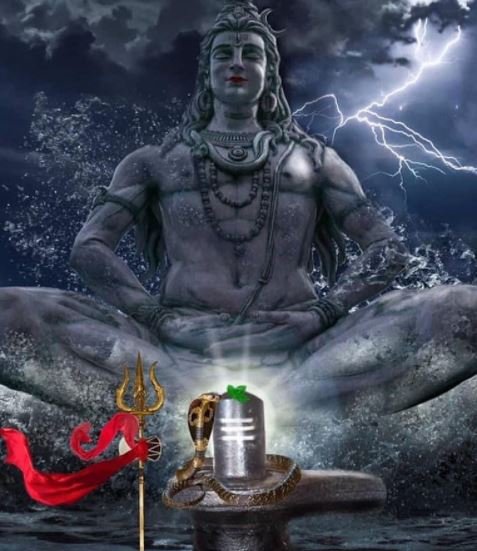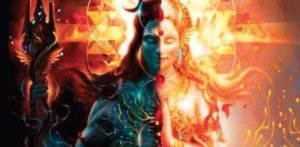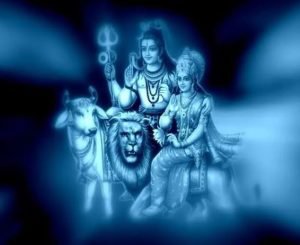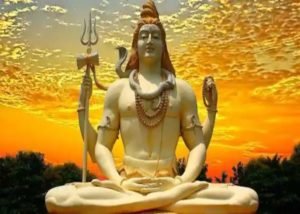Maha Shivratri : What we can learn from Lord Shiva in today’s tyrant times?


Needless to say that the Indian culture, “Sanatana Dharma” is not only the world’s oldest but the most diverse and beautiful culture. Indian culture can be traced back as far as 10,000 years. Many sources had described it as the first and the supreme culture in the world, according to the All World Gayatri Pariwar (AWGP) organization.
India’s cultural Diversity makes all 365 days of the year the “Festival Day” and to be honest Hindus just needed an excuse to celebrate every day of the year so that they can relish nice delicacies. These 365 festivals are being ascribed to different reasons, and for different purposes of life as for example for various historical events, victories, or certain situations in life like sowing, planting, and harvesting. For every situation, there is a festival.
Among this festival, some festivals like “Maha Shivratri”, “Holi”,” Raksha Bandhan”,” Dussehra”, “Diwali” are of great significance.

Maha Shivratri is celebrated predominantly by Hindus, Jains, and even Sikhs. The festival is celebrated annually in honor of “Lord Shiva”,” The God of all Gods”.
In accordance with the Hindu calendar, the fourteenth day of every lunar month or the day before the new moon is known as Shivratri.
Among all the twelve Shivratri that occur in a Lunar calendar year, Maha Shivratri occurs in February-March of each year. Maha Shivratri is also celebrated to commemorate the onset of Spring.
Maha Shivratri literally translates as ‘The Great Night of Shiva’.
According to Hindu scriptures, Maha Shivratri is the night of convergence of Lord Shiva and Maa Shakti, which in essence means “The Masculine and Feminine Energies That Balance the World”.
In Hindu culture, this is a solemn festival that marks the remembrance of “Overcoming Darkness and Ignorance in Life”.
Different Hindus scripture describe the significance of Maha Shivratri.
According to one of them, Maha Shivratri is the night when Lord Shiva performs his cosmic dance of ‘Creation, Preservation, and Destruction.
Another Hindu scripture describes that on this night, “offerings to Lord Shiva helps one overcome and let go of their sins and start on the path of righteousness, allowing the individual to reach Mount Kailash and achieve “Moksha” or “Salvation”.
One Hindu scripture also mentions that on Maha Shivratri night, “Lord “Shiva” also called “Mahadev” performs his heavenly dance or ‘Tandav’”.

On Maha Shivratri night, the northern hemisphere of the planet is positioned in such a way that there is a natural upsurge of energy in a human being. This is a day when nature is pushing one towards one’s spiritual peak. It is to make use of this, that in this tradition, we established a certain festival which is nightlong. To allow this natural upsurge of energies to find their way, one of the fundamentals of this nightlong festival is to ensure that you remain awake with your spine vertical throughout the night.
Maha Shivratri is a night reserved for self-reflection and introspection for the purpose of growing and leaving behind all things that hinder our success. Although Hindus all over the world celebrate Maha Shivratri according to the regional customs everyone visits the temple and bows in front of Lord Siva and asks for his blessings.
Some celebrate in the morning, while others organize Pujas and Jagran at night. Devotees also observe a full-day fast on Maha Shivratri, eating only on the next day after bathing. The fast is observed not only to attain Lord Shiva’s blessings but also as a test of one’s own determination.

Maha Shivratri is the darkest day of the month. So, celebrating Maha Shivratri seems like a celebration of darkness. Any logical mind would resist darkness and naturally opt for light. But the word “Shiva” literally means “that which didn’t exist.” “That which is,” is existence and creation. “That which is not” is “Shiva”. “That which is not” means, if we open our eyes and look around, if our vision is for small things, we will see lots of creation. If our vision is really looking for big things, we will see the biggest presence in the existence is a vast emptiness.
A few spots which we call galaxies are generally much noticed, but the vast emptiness that holds them does not come into everybody’s notice. This vastness, this unbounded emptiness, is what is referred to as “Shiva”.
Today, modern science also proves that “Everything comes from Nothing and Goes back to Nothing”. It is in this context that “Shiva”, the vast emptiness or nothingness, is referred to as “The Great Lord”, or “Mahadeva”.
Every religion, every culture on this planet has always been talking about the omnipresent, all-pervading nature of the divine. If we look at it, the only thing that can be truly all-pervading, the only thing that can be everywhere is darkness, nothingness, or emptiness.
Generally, when people are seeking well-being, we talk of the divine as light. When people are no longer seeking well-being, when they are looking beyond their life in terms of dissolving, if the object of their worship and their sadhana is dissolution, then we always refer to the divine as darkness
Maha Shivratri is very significant for people in all spheres of life. As Lord Shiva is called “The Greatest Yogi “, this festival is very significant for all the people who are on their spiritual path.
Maha Shivratri is also very significant for people who are in family situations as they observe the festival as Lord Shiva’s wedding anniversary.
Maha Shivratri is also very significant for people who are very ambitious in the world as they see the day as the day When Lord Shiva conquered all his enemies.
Maha Shivratri is not only significant for worshippers but also for the ascetics. According to them, Maha Shivratri is the day when Lord Shiva became one with Mount Kailash. He became like a mountain, absolutely still. According to them, Shiva is not worshipped as a God but considered as the Adi Guru in the yogic tradition.
Ascetics considered Lord Shiva as the first Guru from whom the science of Yoga originated. After many millennia in meditation, one day he became absolutely still. That day is Maha Shivratri. All movement in him stopped and he became utterly still, so ascetics see Maha Shivratri as the night of stillness.

Why Maha Shivratri’s day and night are held with such importance in the yogic traditions is because of the possibilities it presents “Spiritual Light” to a spiritual seeker.
Spiritual Light is a brief happening in our mind. Light is not eternal; it is always a limited possibility because it happens and ends.
The Sun is the greatest source of light on the earth. Even the sun’s light, we could stop with our hand which leaves a shadow of darkness behind. But darkness is all-enveloping, everywhere. The immature minds in the world have always described darkness as the devil. But when we describe the divine as all-pervading, we are obviously referring to the divine as darkness, because only darkness is all-pervading. It is everywhere. It does not need any support from anything.
The light always comes from a source that is burning itself out. So, it has a beginning and an end. It is always from a limited source. However, darkness has no source. It is a source unto itself. It is all-pervading, everywhere, omnipresent. So, when we say Lord Shiva, it is this vast emptiness of existence. It is in the lap of this vast emptiness that all creation has happened. It is that lap of emptiness that we refer to as Lord Shiva.
In Indian culture, all the ancient prayers were not about saving ourselves, protecting ourselves, or doing better in life.
In Bhagwad Geeta, Lord has said that we should pray that “Oh Lord, show me the path of Spirituality so that I can come to your association and after leaving the body, my soul will come to your Dham (house) and stay there forever.”
So, when we say Shivratri, which is the darkest night of the month, it is an opportunity for one to dissolve their limitedness, to experience the unboundedness of the source of creation which is the seed in every human being.
Modern science has gone through many phases and arrived at a point today where they are out to prove to you that everything that we know as life, everything that we know as matter and existence, everything that we know as the cosmos and galaxies, is just one energy which manifests itself in millions of ways.
This scientific fact is an experiential reality in every yogi. The word “Yogi” means “One who has realized the oneness of existence”. When I say “Yoga,” I am not referring to any one particular practice or system. All longing to know the unbounded, all longing to know the oneness in the existence is the Actual Yoga as per Hindu Scriptures of Bhagwad Geeta.
The night of Maha Shivratri offers a person an opportunity to experience the “True Yoga”.

Maha Shivratri is an opportunity and a possibility to bring ourselves to that experience of the vast emptiness within every human being, which is the source of all creation. On the one hand, “Lord Shiva” is known as the “Destroyer”. On the other, he is known as the “Most Compassionate”. He is also known to be the “Greatest of The Givers”. The yogic lore is rife with many stories about Shiva’s compassion. The ways of expression of his compassion have been incredible and astonishing at the same time. So Maha Shivratri is a special night for receiving too. It is our wish and blessing that we must not pass this night without knowing at least a moment of the vastness of this emptiness that we call “Shiva” or “Mahadev”.
Let this night not just be a night of wakefulness but a Night of awakening for us.
Some of the mantras which can be recited on Maha Shivratri are: –
ॐ नमः शिवाय |
Om Namah Shivaya ||
ॐ त्र्यम्बकं यजामहे सुगन्धिं पुष्टिवर्धनम् |
उर्वारुकमिव बन्धनान् मृत्योर्मुक्षीय मामृतात् ॥
Om Try- Ambakam Yajaamahe Sugandhim Pusstti-Vardhanam |
Urvaarukam-Iva Bandhanaan Mrtyor-Mukssiiya Maa-[A]mrtaat ||
ॐ नमो भगवते रूद्राय ।
Om Namo Bhagwate Rudraay ||
DISCLAIMER: The author is solely responsible for the views expressed in this article. The author carries the responsibility for citing and/or licensing of images utilized within the text.
